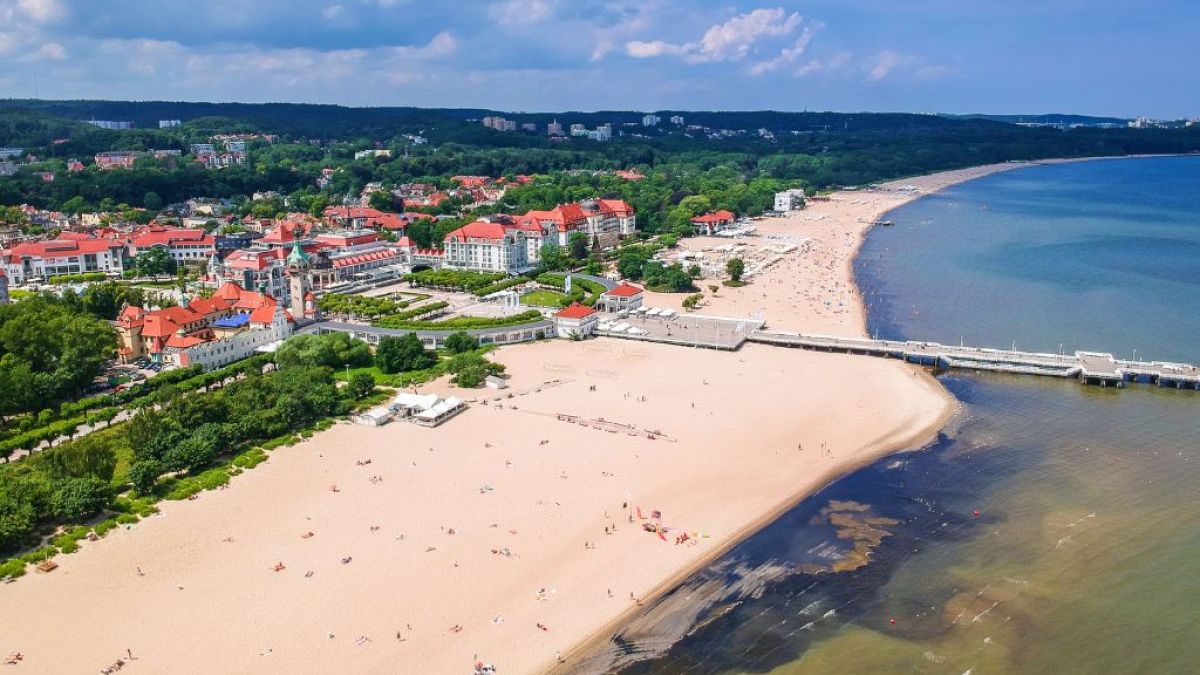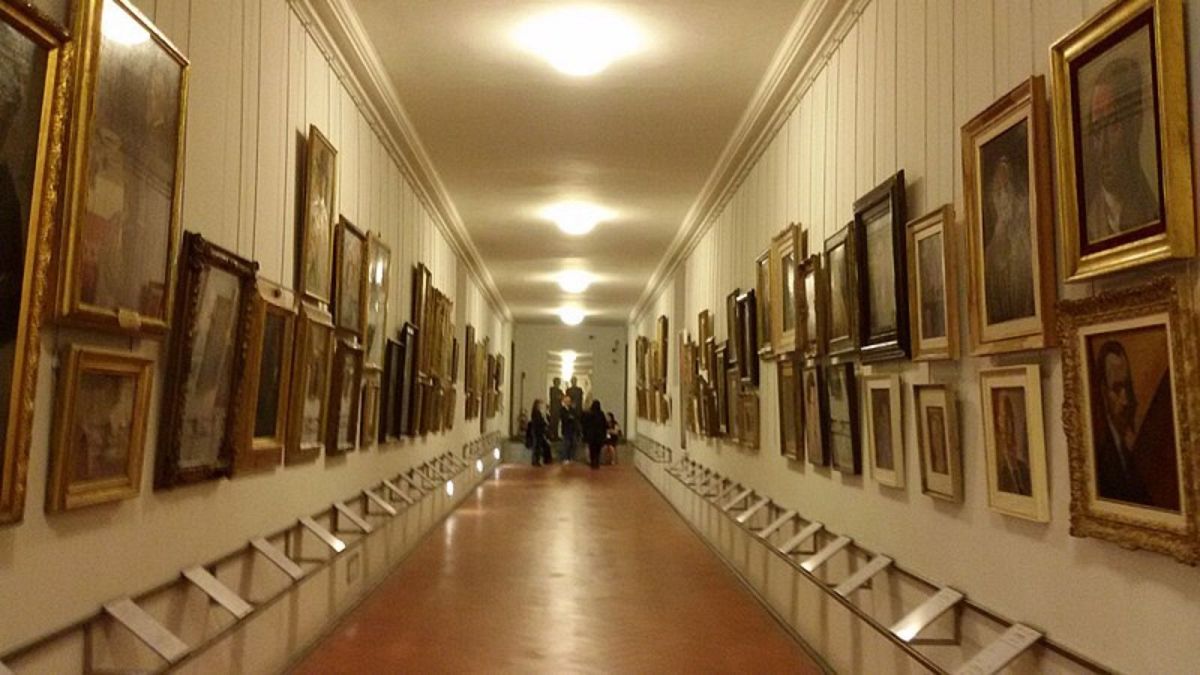Why Poland’s Baltic coastline should be on your travel bucket list

Poland’s Baltic coast offers a unique escape with its historic cities, wellness retreats, and shifting dunes.
When you consider a holiday in Poland, you might immediately think of historic cities like Kraków and Warsaw, renowned for their dynamic art and culture scenes, medieval architecture, and buzzing bars.
If you’re a first-time visitor to Poland, then the lively cities are indeed an excellent introduction to the country’s heritage and modernity.
As Dorota Wojciechowska, director of the Polish Tourism Organisation, explains, Poland has “genuine hospitality…we welcome all with open hearts.”
Wojciechowska highlights the appeal of a city break in “vibrant Warsaw or picturesque Gdańsk or atmospheric Kraków.” These are places that “do not disappoint” if you’re seeking out a cultural escape.
But there’s a surprising side to Poland that you might not expect even if you’re a seasoned traveller here – one that offers sun, sand, and seaside resorts.
“Many people might not associate Poland with sand beaches and cliffs, but we do have outstanding coastline with beautiful villages,” explains Wojciechowska.
Yet, the Baltic coast stretches 770 kilometres, blending seaside beauty, a rich history, and delightful spas. Discover picturesque cliffs and wide beaches where rolling waves carry amber – known as the ‘priceless treasure of the Baltic Sea’ – to the shore.
Poland even hosts the annual World Championships in amber collecting, drawing gem enthusiasts and curious newcomers to experience the thrill of uncovering ancient, fossilised resin that’s been shaped by the waves.
Here are more reasons why you should visit Poland’s Baltic coast.
Sopot: For sun, sand, and Europe’s longest pier
The seaside town of Sopot is Poland’s answer to the quintessential beach resort with a unique Polish twist.
With white sands and tree-lined parks, Sopot is a lively seaside destination on the Baltic coast.
“In Sopot, you will find golden sands and Europe’s longest wooden pier,” says Wojciechowska.
A defining landmark of the coast, the Sopot Pier, or “Molo w Sopocie” in Polish, is a 19th-century pleasure pier.
Extending from Monte Cassino Street – Sopot’s hub of entertainment, dining, and shops – the pier stretches over 511.5 metres into the Bay of Gdańsk.
Initially constructed in 1827 as part of the original harbour, the pier has been reconstructed and renovated multiple times to be transformed into a premier leisure spot.
The pier’s multicultural roots are also unmistakable: a French designer envisioned it on Polish territory under Prussian rule, and in the 19th and 20th centuries, railway and sea routes brought European visitors eager to stroll its wooden planks.
Sopot is more than just its pier, though. Dotted by its wide beach, you’ll discover charming cafés, boutiques, and bars where locals and visitors mingle over coffee, local beers and ice cream.
Gdańsk: Where coastal heritage meets historic charm
Just a short drive from Sopot lies Gdańsk, which combines the usual draws of the coast with deep historical significance. Gdańsk, one of Poland’s most picturesque cities, is known for its Old Town, filled with colourful facades and historic architecture.
According to Wojciechowska, Gdańsk is “a gem” of a city where you “can have the best of both worlds… if you cannot decide whether to go on a beach holiday or city break, then you can have both.”
Gdańsk’s history stretches back centuries. The city was one of the hubs of the maritime trade, which is evident in its landmarks, such as the medieval Gdańsk Crane, which holds a national maritime museum, and the popular Long Market Square, which is teeming with local foods and fabulous architecture. A walk along the Motława River brings the city’s rich heritage to life.
If you’re interested in Poland’s modern history, Gdańsk is also the birthplace of the Solidarity movement, and the European Solidarity Centre offers a poignant insight into Poland’s journey toward democracy.
And should you wish to take a break from the city sights, the coast is just minutes away.
Łeba and the shifting dunes of Słowiński National Park
Coastal Łeba is known for its expansive sandy shores and pristine waters, which are often praised as the cleanest along Poland’s Baltic coast.
In the popular months of July and August, you’ll be able to sniff out the food stalls. Fish stands are dotted everywhere, offering the daily catch, which is fried or smoked to perfection.
Are you a nature lover? The nearby Słowiński National Park offers an otherworldly experience.
The park is home to unique plants: think dune grasses, coastal pinewoods, and marsh plants. And, if you’re lucky, you might observe the abundance of rare bird species, including white-tailed eagles, eagle owls, cormorants, and black storks.
Known for its massive ‘shifting dunes’, this natural preserve is a place of constant transformation, where towering sand dunes – some over 40 metres high – move and reshape with the wind.
Witnessing these ever-changing landscapes can feel both serene and surreal.
Kołobrzeg: Poland’s hidden coastal spa and wellness hub
Kołobrzeg, located in West Pomerania at the mouth of the Parseta River, has long been a destination for wellness and relaxation and will give you an appealing mix of seaside and therapeutic charm.
As one of Poland’s largest and oldest spa resorts, Kołobrzeg embraces its natural resources, such as therapeutic mud and brine, which are prized for their healing properties.
The spa’s lowland marine climate is enriched by strong onshore winds that carry ozone and iodine particles from the sea, creating an environment particularly beneficial for respiratory and cardiovascular health.
This health resort has attracted visitors since the 19th century, who were inspired by the concept of sea bathing to enhance their wellbeing. By 1967, Kołobrzeg had received official spa status.
The town’s historic brine facilities use natural brine rather than heated seawater, a unique feature that distinguishes Kołobrzeg from other coastal spas.
Today, Kołobrzeg is Poland’s largest spa resort, equipped with state-of-the-art facilities and treatments for conditions ranging from asthma to thyroid disorders.
But beyond all your pampering possibilities, you’ll see that Kołobrzeg is brimming with history.
With its time-honoured lighthouse, Gothic cathedral, and modern yachting marina, Kołobrzeg is a must-visit on the Polish coastline.
As early as the 8th century, the town was a fortified settlement and later joined the Baltic Hanseatic League, becoming a centre of trade and salt production.
Although heavily damaged in the Second World War, Kołobrzeg has been meticulously rebuilt and now thrives as a hub for both wellness and cultural activities.
The Tricity: For a fusion of beach and culture
Why not embrace the Tricity area on Poland’s Baltic coast and visit Gdańsk, Sopot, and Gdynia for a holiday full of variety?
All these cities are brilliantly connected and accessible, as Dorota Wojciechowska explains: “It’s very easy… it’s a 20-minute drive from Gdańsk to Sopot.”
Gdańsk is the oldest of the three and a typical port city that also played a pivotal role in Poland’s modern history.
Sopot, located between Gdańsk and Gdynia, offers a more relaxed, resort-style vibe where you can unwind. Be sure to visit its many offbeat spots, such as the quirky Crooked House, which showcases a distinctly playful atmosphere.
In contrast, Gdynia is the youngest and most modern of the three cities. With its busy harbour, sleek modernist architecture, and annual cultural events, Gdynia holds an energetic, almost youthful spirit.
The city’s festivals, such as the Open’er Music Festival and the Gdynia Film Festival, always attract a lively and creative crowd.
Head to the Sea Boulevard for impressive waterfront views when you’re not visiting the wartime destroyer, ORP Błyskawica, or diving into the Gdynia Aquarium, where you can appreciate the city’s maritime heritage.
World News || Latest News || U.S. News
Source link



